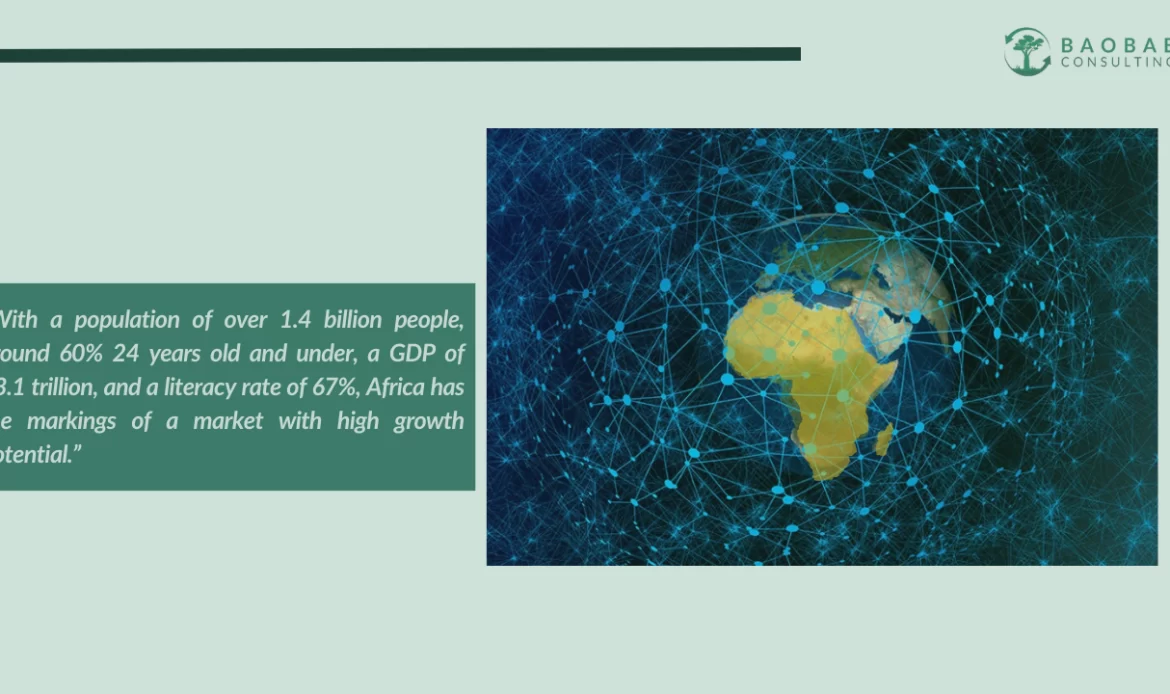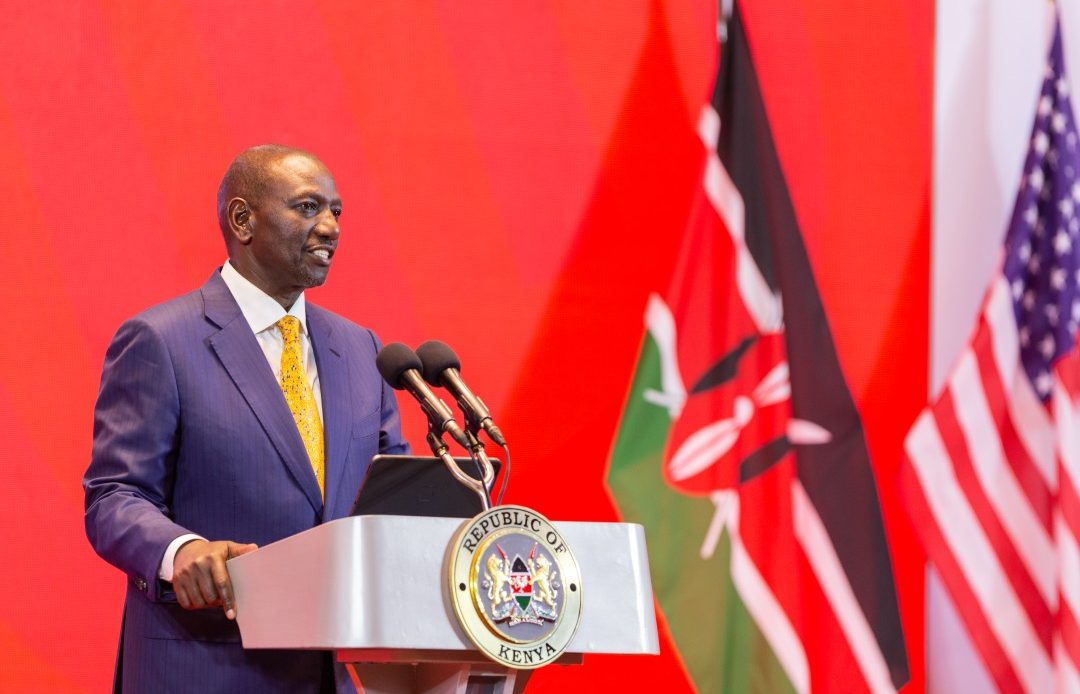Baobab Consulting is passionate about driving impact across the continent. As a result, with the 2020 unveiling of our new website, we formed the Strategic Advisory and Research branch, a new arm of the company that works with companies and nonprofits to produce knowledge and disseminate insights in a creative, digestible way. In turn, these insights inform social and economic development across a wide range of stakeholders and industries.
The Baobab team leverages computer-assisted qualitative data analysis software (CAQDAS, or QDAS for short) to provide deep insights for our clients in the private and public sectors. Different from AI programs that work autonomously using algorithms to provide answers, QDAS is software that “facilitates efficient management of qualitative and mixed methods data through a variety of tools to organize and keep track of multiple data sources and types and of the ideas flowing from those data.”
Baobab Consulting uses MAXQDA as its QDAS of choice. In addition to being a powerful organizational tool, MAXQDA adds a wide range of visual and analytical tools to our researchers’ arsenal. These tools allow our team to deepen our analysis and understanding of the data by visualizing trends and patterns in ways that would otherwise be very messy, difficult, or impossible to achieve manually.
Using MAXQDA to Conduct Literature Reviews that Inform Strategic Insights
In particular, Baobab Consulting utilizes MAXQDA’s organizational tools to conduct literature reviews that inform the strategic insights found in our white papers, position papers, intelligence reports, and e-books. With access to a wide variety of scholarly and professional journals, Baobab quickly collects published knowledge on a given topic and later organizes and analyzes it using MAXQDA.
MAXQDA’s analysis tools allow the Baobab team to categorize themes, findings, and conclusions within the assembled literature. By conducting a critical appraisal of the collected research, Baobab can quickly come up to speed on a given topic while identifying significant findings or gaps within the dataset. Further, by working with variables such as author or date of publication, we can identify trends, patterns, and findings across the literature over time, across regions, or among authors.
One such example is collecting research on youth entrepreneurship across Africa; using MAXQDA to sort the literature by date of publication and region of focus, our team is able to provide a deep and actionable view of how strategies for youth engagement in entrepreneurship have varied across time and region. In turn, these insights help us provide strategic recommendations that will inform our clients seeking to drive impact and increase youth entrepreneurship across the continent.
Using MAXQDA to analyze qualitative interviews, surveys, & focus groups for next-level analyses
Outside of literature reviews, the Baobab team also uses MAXQDA to analyze qualitative and mixed methods data from the field. MAXQDA can handle a wide range of data types, from interview and focus group transcripts, to open-ended or structured surveys, to images, audio, video, and more. Working with pre-collected or original data obtained from Baobab or its partners’ fieldwork, our researchers “code” data as an important first step in the analytic process. Simply put, “coding” is the act of labeling, categorizing, and distilling individual themes or concepts in the data, and is often the “first stop” toward a robust analysis.
Once the data has been coded, Baobab employs a myriad of analytical tools, from simple text retrieval tools that pull coded segments of text, to complex queries that set multiple criteria and search for data that meet all — or none — of those conditions. Visual tools enable us to create categories and explore linkages and relationships between concepts, visualize the distribution of codes at multiple levels in the data, and display the frequency of overlap between concepts. The iterative nature of the analytic process, as well as the flexibility of the software, empower our team to refine broad categories further, and explore concepts as they emerge. Mixed methods can also be leveraged at this stage to analyze data using variables like age, sex, region/country, and stakeholder type, to name a few.
Whether the topic is understanding the current needs of remote workers across the continent, investigating the impact of micro-loans on entrepreneurs in several countries, or understanding the impact of emergency situations on girls’ education in Southern Africa, MAXQDA’s tools can be leveraged to conduct an in-depth analysis of the data. In turn, these analyses form the foundation of impactful insights that can help stakeholders make the best decisions for their businesses and strategic initiatives in Africa.
Using MAXQDA to inform Social Media Engagement Strategy
Finally, MAXQDA also comes equipped with a Twitter data analysis function, which allows the import of up to 10,000 tweets using a specific hashtag or keyword, to or from a specific author(s), or some combination in-between. Once imported to the software, these tweets can be filtered, analyzed, and visualized using a number of tools, some specifically made for the analysis of tweets. Through this functionality, Baobab’s Public Relations & Communications branch is able to conduct an in-depth analysis of social media engagement for a given hashtag or author.
Internally, Baobab uses MAXQDA’s Twitter data analysis function to visualize engagement with our Twitter account and for Baobab-sponsored events. By pulling the most recent tweets to, from, and at our account into MAXQDA, we can visually display the users who engaged with our posts, identify the most common hashtag used around an event, and see where hashtags may be used concurrently. The most — and least — successful tweets may also be identified and analyzed in conjunction with hashtag and author data to parse out the why and the how behind their success. Lastly, metadata attached to tweets may also be easily visualized in graphs and tables, providing quick insights into the date and time of engagement, authors by number of followers, and more.
All of this data may be used to inform social media strategy. For example, knowing that two hashtags are frequently being used together in conversations on a certain topic empowers the Baobab social media team to use those hashtags together to extend our reach. Conversely, knowing which hashtags are not being used together, or used at all, can help adjust our posts in the opposite direction, staying away from unsuccessful hashtags. Furthermore, knowing the authors and accounts who are engaging with us most frequently has important implications for networking and outreach, and understanding the keywords and phrases being used in discourse on a topic can help us refine our posts for maximum reach and impact.
Conclusion
No matter the type of analysis being conducted, another critical feature of MAXQDA is its ability to provide what Christina Silver calls “access for others.” According to Silver, QDAS enables teams of researchers to “collaborate on project materials and integrate interpretive contributions” from different geographic locations. As a distributed team spread across 15 countries and 25 cities, it’s critically important that our team can share insights and collaborate quickly and efficiently. Access for others also extends beyond the internal Baobab team, as any findings or visualizations can be quickly exported and shared in reports and presentations for clients and stakeholders.
While analysis is certainly possible without the use of CAQDAS, Baobab Consulting’s Strategic Research & Advisory branch is a firm proponent of the role they play in developing insights in the social sciences. When appropriately used, CAQDAS like MAXQDA offer top-notch organizational, analytical, and visual tools that free the researcher from cumbersome, time-consuming, or near impossible tasks, thus facilitating the free flow of ideas, theories, and analysis as researchers work through the data.
Whether a company is looking to do better business in Africa, fully understand a complex issue, analyze data conducted in the field, or optimize their social media outreach, CAQDAS like MAXQDA may play a role in delivering next-level analyses that can, in turn, be used to inform strategic interventions across the continent.





